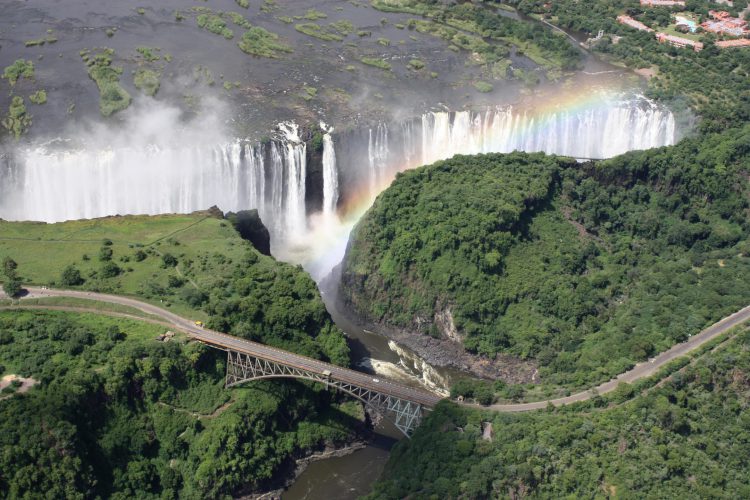Near the point on the mighty Zambezi River where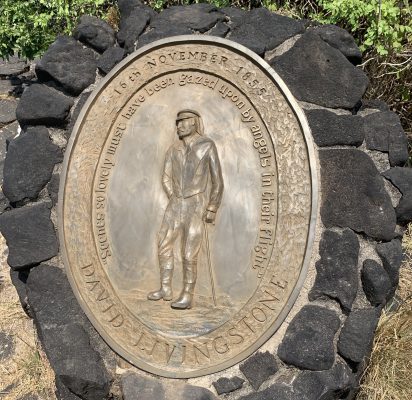 four countries meet, Victoria Falls is one of the seven wonders of the world and a UNESCO World Heritage Site.
four countries meet, Victoria Falls is one of the seven wonders of the world and a UNESCO World Heritage Site.
“No one can imagine the beauty of the view from anything witnessed in England. It had never been seen before by European eyes, but scenes so lovely must have been gazed upon by angels in their flight” (Livingstone).
- The Scottish explorer, David Livingstone was the first European to discover the falls (which he promptly named after his Queen Victoria) on November 16, 1855.
- Because sprays from the waterfall can be seen over 30 miles away,
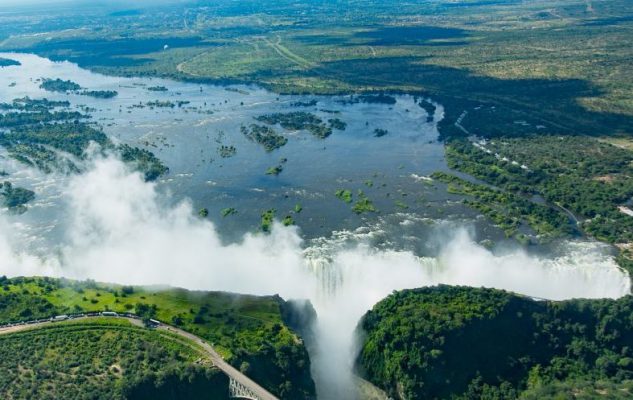 they are known in the local language as Mosi-oa-Tunya – “The Smoke that Thunders,”
they are known in the local language as Mosi-oa-Tunya – “The Smoke that Thunders,” - Mid-April is when peak flood waters occur. Roughly 165 million gallons of water flow over the edge per minute, producing a spray that rises 1650 feet into the air.
- You can see the falls from two countries – 75% of the Falls can be seen in Zimbabwe and 25% in Zambia.

- It is neither the widest nor the tallest waterfall in the world but being slightly more than a mile wide and 354 feet tall, makes it the largest sheet of falling water on earth. For perspective, it is twice as wide and twice as deep as Niagara Falls.
- The surrounding area comprises eight spectacular basalt gorges and several islands that serve as breeding sites for endangered migratory bird species, such as the Taita Falcon and Black Eagle.
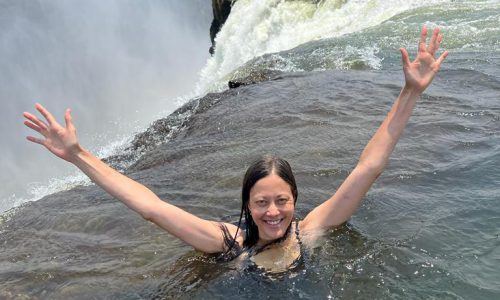
- The falls create Lunar Rainbows which you can see when conditions are just right: with sufficient spray, but not too much, under clear skies and a full moon. June, July and August are the optimal months to catch these “Moonbows”.
- You can swim to the edge of the chasm in Devil’s Pool when water levels are at their lowest in September – December.
- The Victoria Falls rainforest on the Zimbabwean side is the only
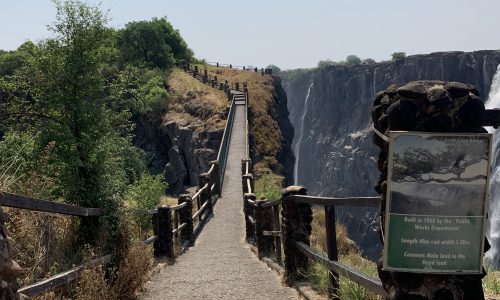 place in the world where it “rains” every day from the mist from the falls.
place in the world where it “rains” every day from the mist from the falls. - One of the best vantage points of the falls is from the Knife Edge Bridge on the Zambian side, with views of the Eastern Cataract, the main falls, and the Boiling Pot where the river turns and heads down the Batoka Gorge.
- The highest flow ever was recorded in 1958 (read more about this flood and the mythology surrounding it) when the water in the gorges rose 60 feet above its normal flood level.
